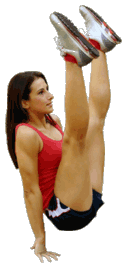At WiseGEEK, we're committed to delivering accurate, trustworthy information. Our expert-authored content is rigorously fact-checked and sourced from credible authorities. Discover how we uphold the highest standards in providing you with reliable knowledge.
What is a Muscle Clamp?
The Muscle Clamp is a patented quick-release weight collar clamp designed and patented by MCR Strength Inc., a US company. The Muscle Clamp allows the user to quickly change weights owing to its lightweight and single-motion lock and unlock system. The clamp features a special rubber lining that reduces scratches on the bar.
When working in a school fitness program, MCR Strength Inc. President Verl Miller noticed that the students had difficulty using the weight clamps. The existing spring-type clamps usually were too tight to squeeze open, and often the students pinched their fingers in the apparatus. Some of the students did not use the weight locking collars because they were difficult to use, which put them at risk for injury.

Miller surveyed weight lifters and gym owners, and by using this knowledge base of strength training, fitness training, and education, the company isolated eight fundamental requirements for designing the best weight collar. MCR Strength Inc. identified these as safety, speed, collar weight, cost, durability, size, protection, and personalization. As a result of this research, Miller developed the Muscle Clamp, a quick-release collar clamp that the company patented and began selling in 1994.
Safety usually is one of the most important features of a weight collar clamp. The Muscle Clamp typically creates little risk of injury while a person changes weights, lifts, swings, or drops the weight bar. The high-pressure locking system generally ensures that there is no slippage, even when accidentally dropping and bouncing the weight bar.
The company uses durable plastic, making the clamp lighter than traditional metal clamps, which can weigh approximately one pound (about 0.5 kg) or more. At only four ounces (about 113 grams), the lightness also usually makes it easy to transport the clamps to and from the gym in a person's pockets or gym bags, typically without much difficulty.
In order to cater to more weight lifters, MCR Strength Inc. produces the clamp in two sizes: a one-inch (2.54-cm) size and the official Olympic two-inch (5.08-cm) size. Generally, the company offers the clamp in different colors, including black, red, and blue. The color variety often makes it easier for weight lifters to keep track of their clamps.
Other types of weight-locking collars include spring collar clamps, which usually have handles that the weight lifter squeezes to open, and collars that have screws or bolts that tighten metal or plastic rings onto the shaft. Most metal locks with rubber or plastic linings do not damage the bar. Generally, there is not one best type of collar, and individual weight lifters usually have a favorite weight-locking collar style that he or she uses repeatedly with satisfaction.
AS FEATURED ON:
AS FEATURED ON:










Discuss this Article
Post your comments